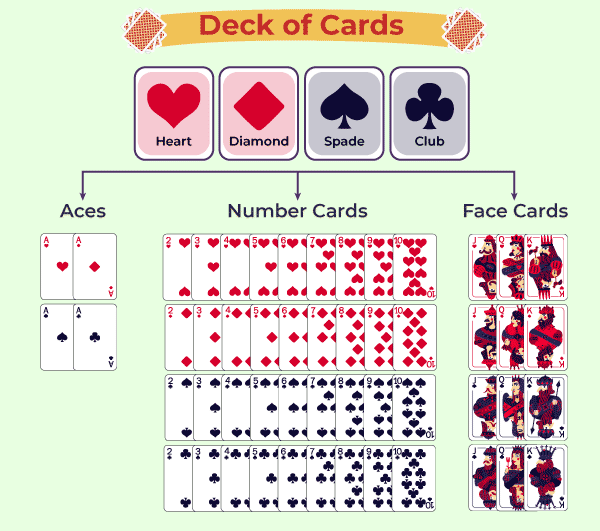
|
|
Four kings are there in a typical pack of 52 cards. These kings represent the four suits: hearts, diamonds, clubs, and spades. Each suit has one king, making a total of four kings in the entire deck. Understanding this basic card composition is crucial for card games, magic tricks, and even probability studies. Whether you’re a card game enthusiast or a casual player, knowing the number of kings in a deck can enhance your appreciation and strategy in the game. Kings in a Pack of CardsThe total number of kings in a deck of cards is an interesting way to get yourself to be initiated into the world of card games, probability, and combinatorics. The deck of cards is a usual piece of equipment used in card games and knowing its composition is an essential requirement both for a leisure player and a serious one.
How Many Kings are in a Pack of Cards?For Traditional Pack of Cards: A standard pack of cards consists of 52 cards, divided into four suits: hearts, diamonds, clubs, and spades. Each suit contains 13 cards: Ace, 2 through 10, Jack, Queen, and King. Therefore, in a traditional pack, there are Four kings—one in each suit. For Customized or Themed Pack of Cards: While the traditional pack is the most commonly used, there are also customized or themed packs that might have a different structure. These decks are often designed for specific games or promotional purposes and can vary in the number of cards and suits. However, for most standard card games, the traditional pack format is used. Importance of Kings in Card GamesThe theme of a deck and the role of the kings are some of the most important things that you have to take into consideration:
Relevance to StudentsThe purpose of this article is to let students know that in a deck of cards there are kings, talk about their significance, and show how they can be used and give examples so that the students can really understand. At the end of the article, students should be able to:
Exploring the Topic in DetailStructure of a pack of card
Probability CalculationsDrawing a King: The probability of drawing a king from a full deck is calculated as:
Practice QuestionsQuestion 1: What is the probability of drawing a king from a full deck of 52 cards? Solution:
Question 2: If two cards are drawn from a deck without replacement, what is the probability that both cards are kings? Solution:
Question 3: What is the probability of not drawing a king in a single draw from a full deck? Solution:
Question 4: In a standard deck, what is the ratio of face cards (Jack, Queen, King) to the total number of cards? Solution:
Practical Examples and Tips
ConclusionBeing able to count the cards in the deck or, in simple words, explaining the importance of teaching card games and probability using a King card is a very crucial and at the same time relatively simple thing. A knowledge of this sort not only has the potential to determine a winning strategy in the games but it also sets forth the use of mathematics in real-life contexts. Through the hour of combining these principles with learning, students would be able to get insights that lead to new thought patterns which is why the whole action of learning is a beneficial part for both adults and youth. Frequently Asked Questions (FAQs)How many kings are in a deck of cards?
What is the probability of drawing a king from a full deck?
Are all kings equal in value across different card games?
Can understanding the number of kings in a deck help in learning probability?
What are the four suits in a deck of cards?
|
Reffered: https://www.geeksforgeeks.org
| Maths MAQ |
Type: | Geek |
Category: | Coding |
Sub Category: | Tutorial |
Uploaded by: | Admin |
Views: | 27 |